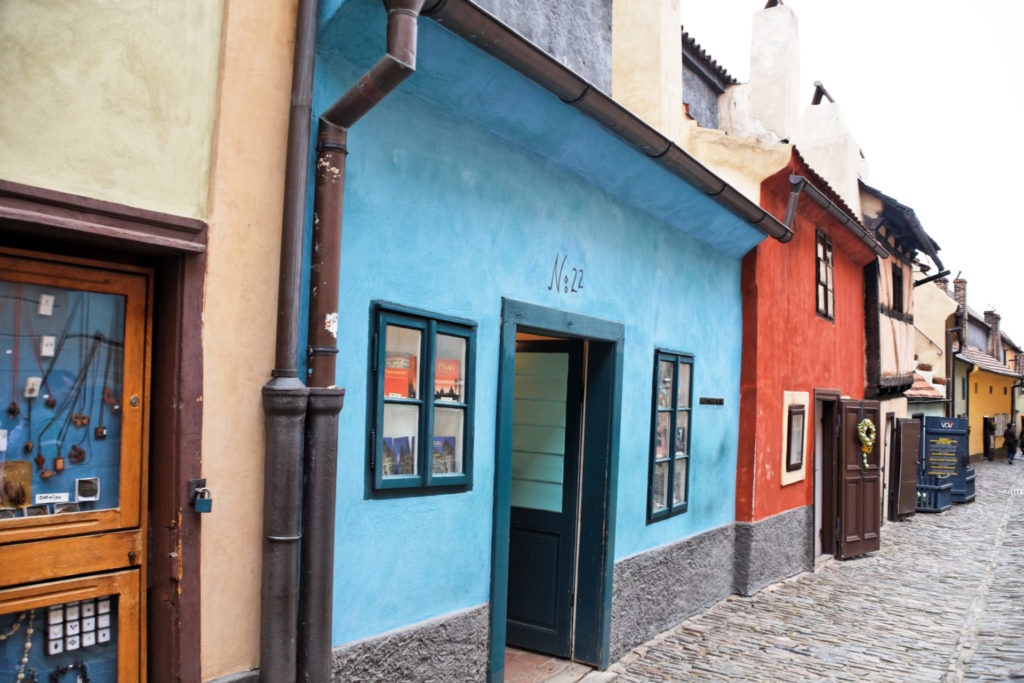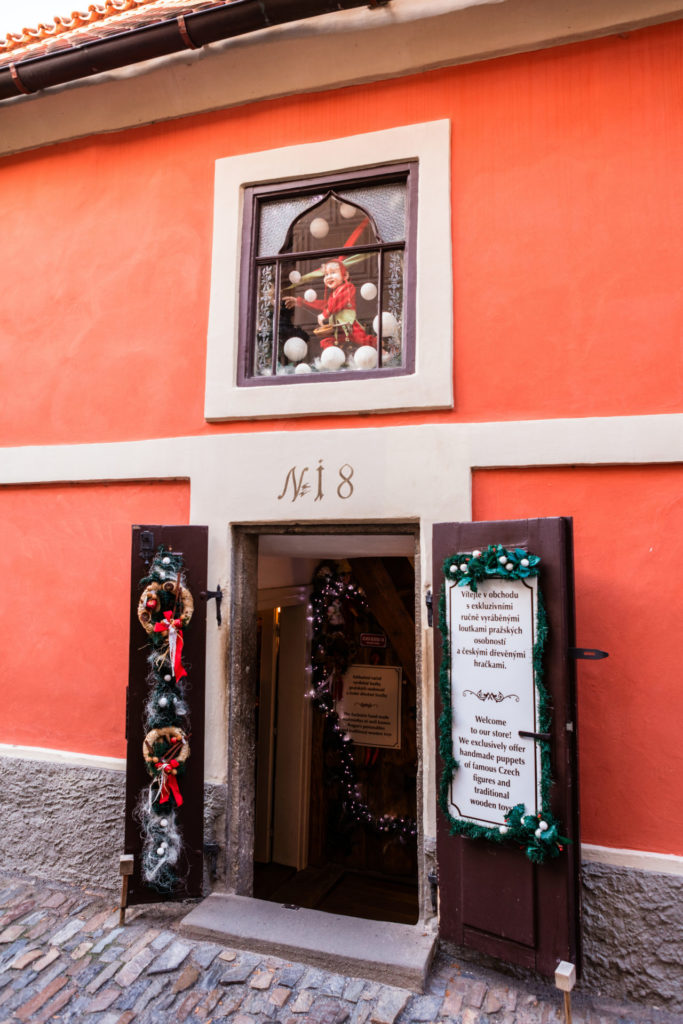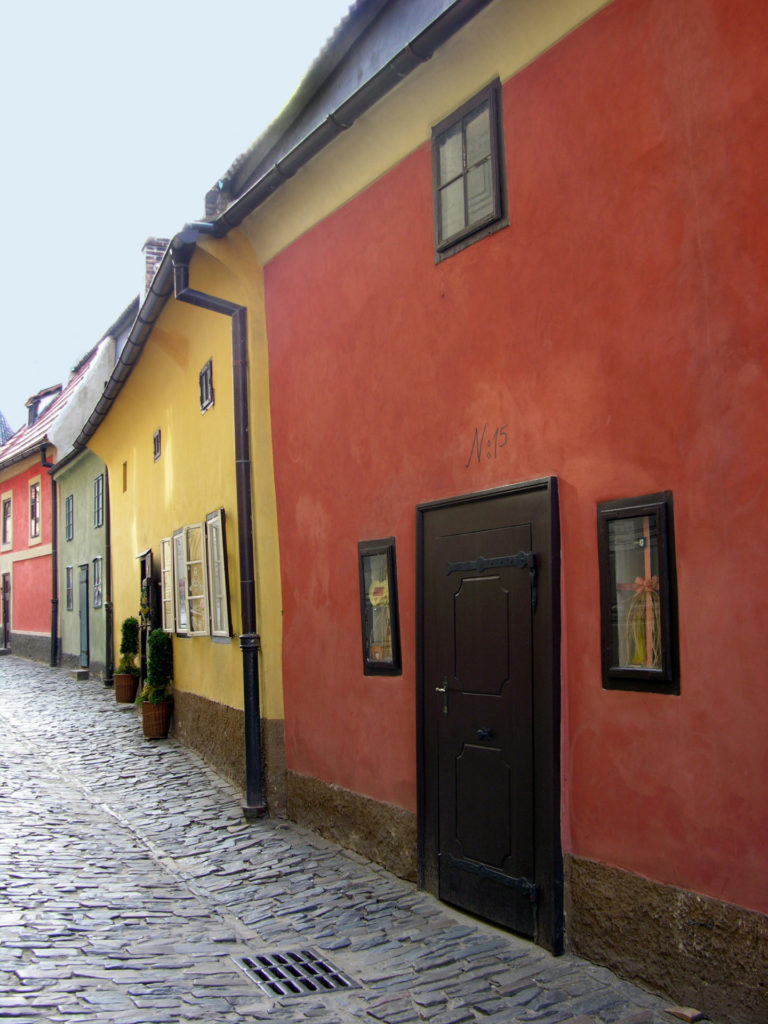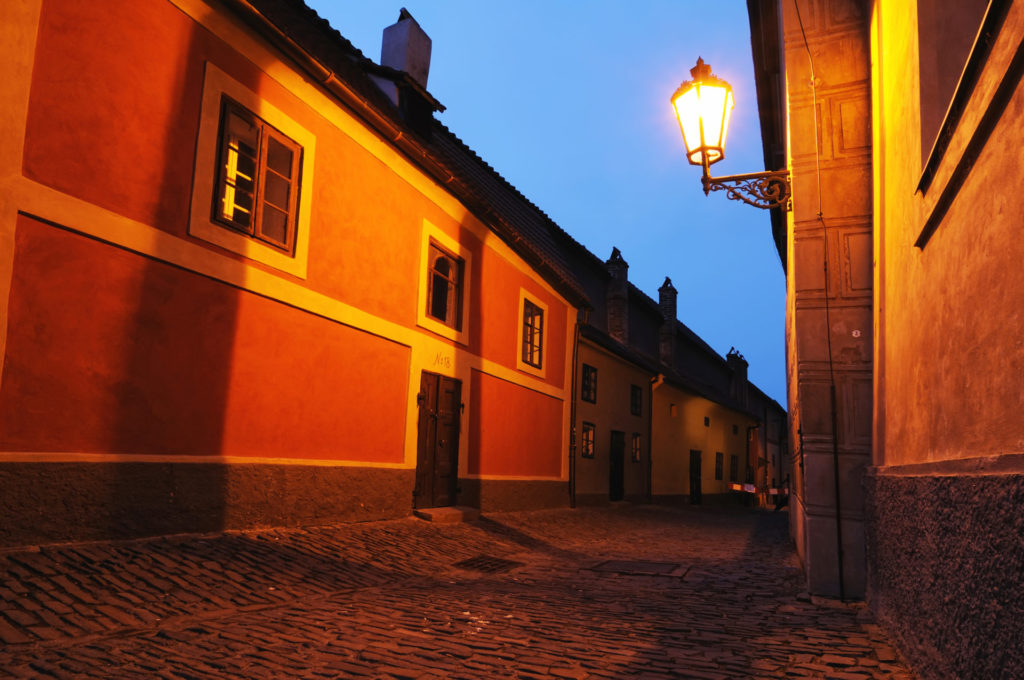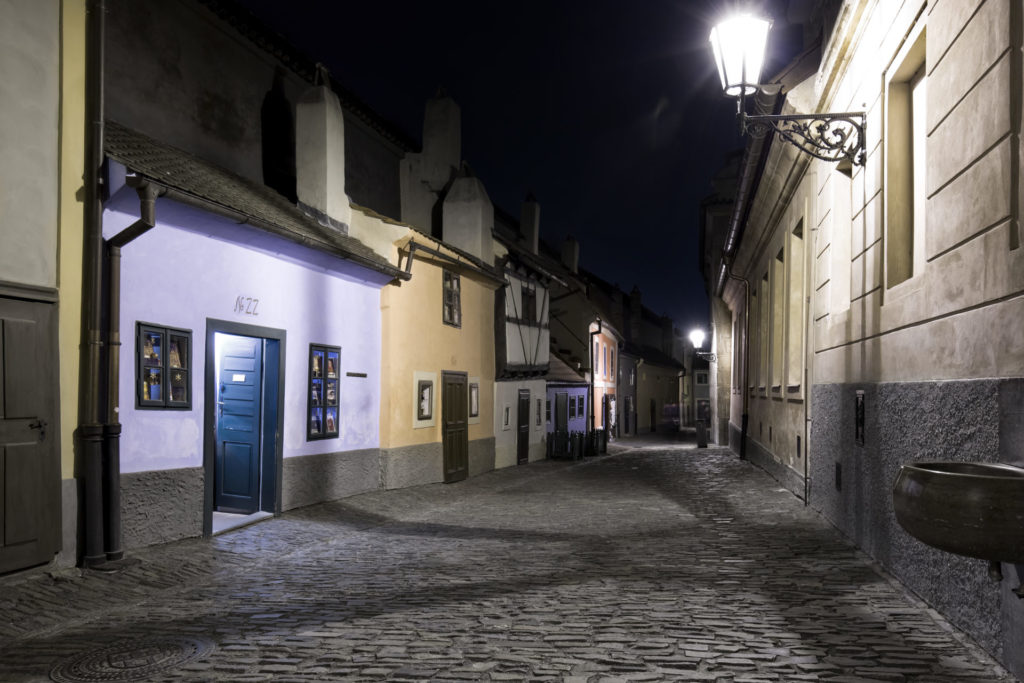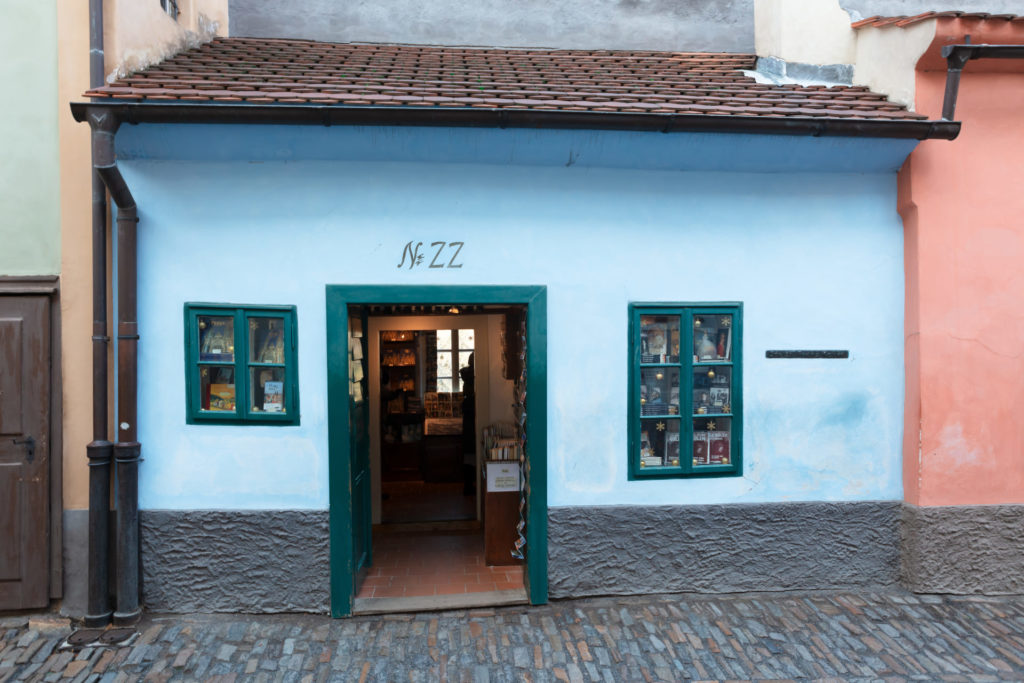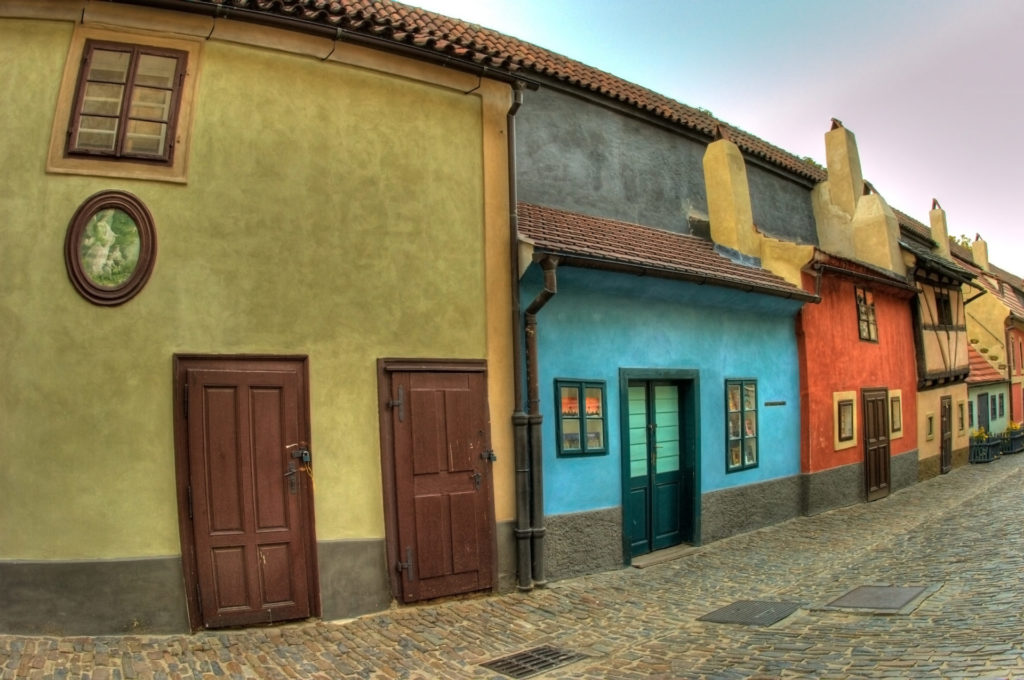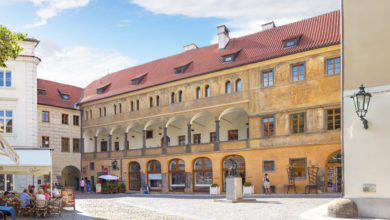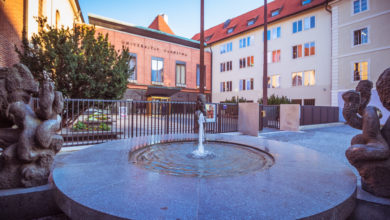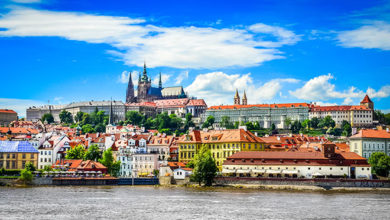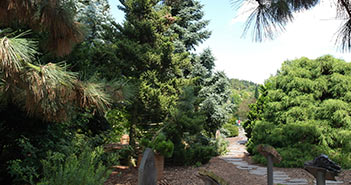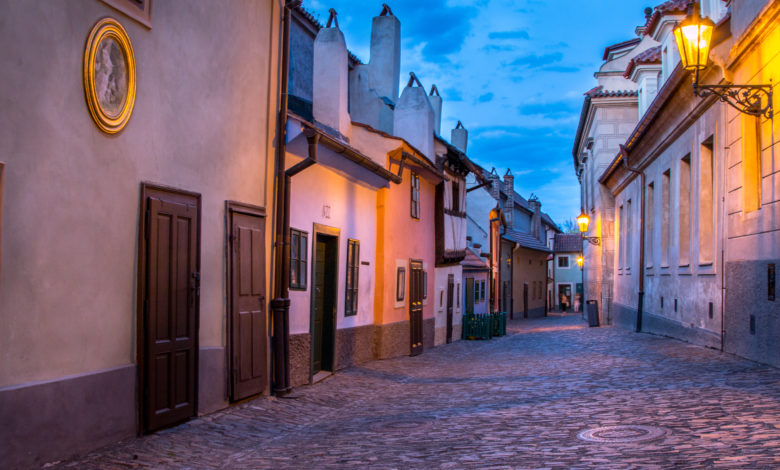
Framed by the spectacular and imposing structures of the White Tower and Dalibor Tower, Golden Lane is ticked away quietly against the walls of the castle. With a history of being home to alchemists in the 16th and 17th century and those in the imperial entourage, it is now a quaint and charming little street with spectacular sights.
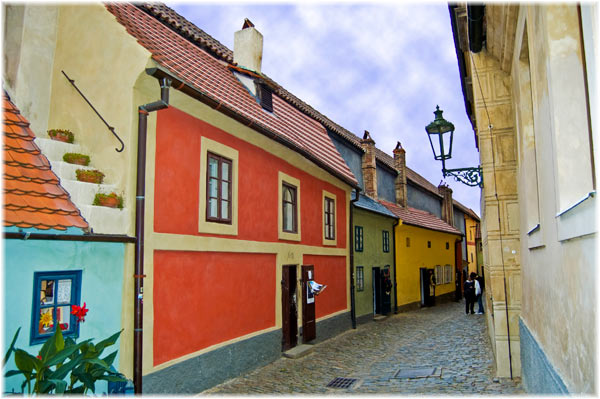
Emperor Rudolf was a huge fan of alchemy and, during his reign, called on the services of some eminent names in the field, such as Englishmen John Dee and Edward Kelley. Although Rudolf was the emperor, he was a troubled man and was predisposed to bouts of insanity and other mental conditions. This perhaps explains his obsession with the mystical and ancient art of the alchemist. Essentially alchemy attempted to apply scientific principles to magic, with the main goals being to turn metals into gold and discover the secret of eternal life.
Despite this association with alchemy, the name “Golden Lane” was actually derived from the goldsmiths living in the area and not from the alchemists themselves. Much of the current beauty of the street owes itself to work conducted by Empress Maria Theresa, who declared that all of the run-down houses there were to be replaced by buildings constructed using better materials. During the 19th century, the street became a hotbed for artists and other creative minds, with Franz Kafka being one of the most famous residents and the poet Jaroslav Seifert. Essentially Golden Lane is an area that, over the decades, has moved from being a slum to a stunning street, which is now mainly focused on the tourist trade.

